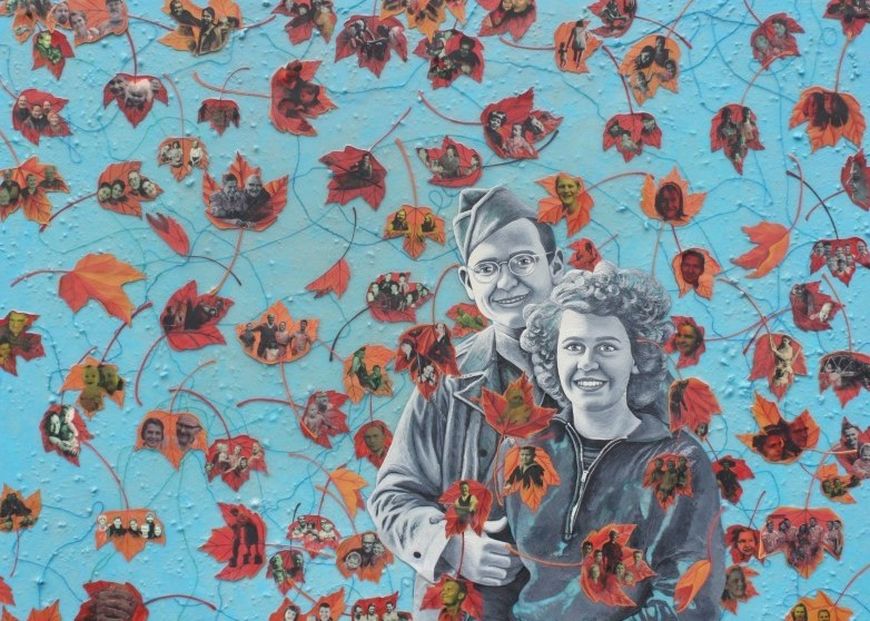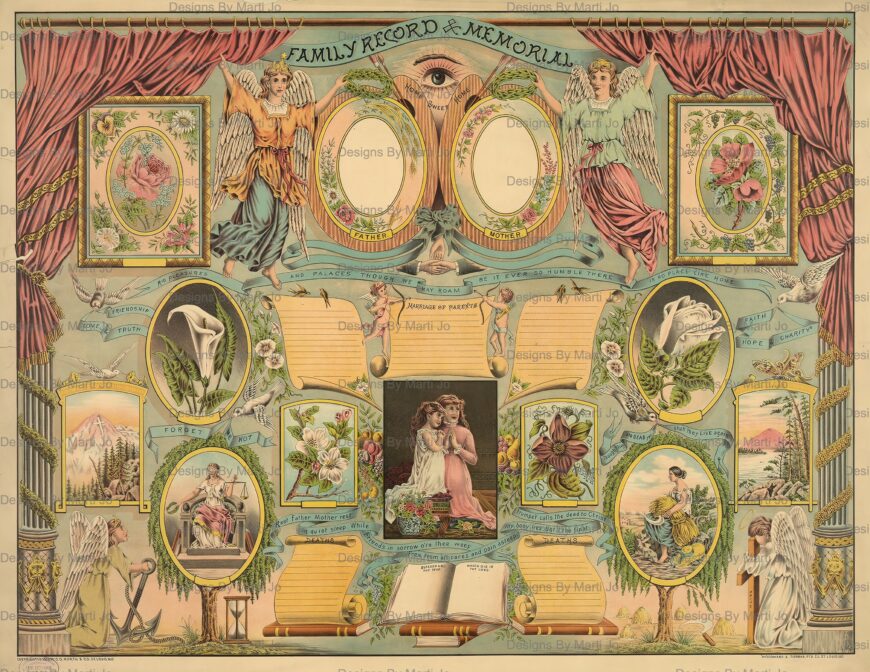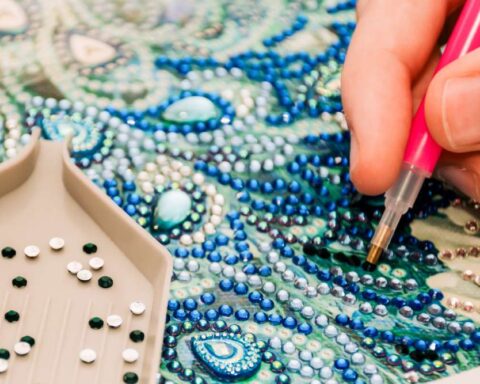Memorial art holds a special place in our hearts and homes. These cherished pieces pay tribute to loved ones who have passed away and serve as a tangible link to our family history. In this article, we will delve into the concept of memorial art, its emotional impact, discuss its role in preserving family history, examine the process of creating memorial art, and ponder the future of this unique artistic expression.
Understanding the Concept of Memorial Art

When we think of memorial art, we often envision beautiful sculptures, intricate jewelry, or even personalized urns. However, memorial art encompasses a much broader range of objects. It can be a painting that captures a loved one’s essence or a quilt made from heirloom fabrics. The key element is that these pieces are created to honor and remember someone dear to us.
Memorial art goes beyond the physical representation of a person. It is a way to encapsulate their spirit, essence, and impact on our lives. It is a tangible manifestation of our love and respect for them, a way to keep their memory alive long after they have passed.
The Emotional Impact of Memorial Art
Memorial art has a profound emotional impact on those who commission or inherit these pieces. It allows us to express our grief, honor our loved ones, and keep their memory alive. Creating or displaying memorial art can bring comfort and solace during loss, providing a place for healing and remembrance.
For many, memorial art becomes a cherished heirloom passed down through generations. It serves as a tangible connection to our ancestors, a reminder of our origins and the values they instilled in us. These objects hold not only sentimental value but also serve as a visual representation of our family’s history.
The Role of Memorial Art in Preserving Family History

Memorial art plays a vital role in preserving our family history, serving as a bridge between the past and the present. Through these artistic souvenirs, we can pass down stories, traditions, and values from one generation to the next.
The Art of Remembering: Memorial Art and Family Stories
Memorial art often becomes a centerpiece for sharing family stories. Each piece carries its unique narrative, reminding us of the lives and experiences of those who came before us.
A family portrait painting stands as a testament to this. It’s not just a representation of faces or a particular moment in time but a rich tapestry of emotions and legacies intertwined. Every brushstroke, every shade, and every detail captures anecdotes, aspirations, and the profound connections shared among family members.
The Evolution of Memorial Art in Family Heirlooms
Over time, memorial art has evolved from traditional forms to more personalized expressions. While classic pieces such as engraved plaques or portrait paintings still hold significance, modern technology has opened up new possibilities. From custom-made jewelry incorporating ashes to digital memorials, the options for creating personalized family heirlooms are ever-expanding.
The Process of Creating Memorial Art
Creating memorial art is a deeply personal and artistic process. It involves carefully considering materials, techniques, and symbolism to capture the essence of the remembered individual.
Choosing the Right Materials for Memorial Art
The choice of materials is crucial in memorial art. Some artists may prefer stone, wood, or metal. In contrast, others may opt for more unconventional materials like glass or mixed media. Each material carries its inherent meaning, contributing to the overall message of the artwork.
The Artistic Techniques Used in Memorial Art
Memorial art encompasses various artistic techniques, from sculpting and painting to photography and textile design. Each method serves to convey the emotions and memories associated with the piece.
The Future of Memorial Art as Family Heirlooms
As technology continues to advance, so does the future of memorial art. The digital age has created new possibilities for personalized memorials and interactive experiences.
The Influence of Technology on Memorial Art
As we usher in an era dominated by the digital realm, memorial art is not left behind. The intersection of technology with this sentimental form of artistry has paved the way for immersive experiences.
Virtual Reality (VR) and Augmented Reality (AR) in Memorial Art

Imagine reliving memories with loved ones in a simulated environment or overlaying digital memories in real-world settings. VR and AR can offer interactive memorials that allow individuals to engage with the past in a deeply personal and immersive manner.
Digital Immortality: Preserving Voices and Personalities
Recent technological advancements have made it possible to preserve a person’s voice, allowing them to leave behind messages for future generations. Moreover, AI-driven platforms can create digital versions of individuals, ensuring their stories, wisdom, and personalities are never lost.
The Integration of Biotechnology in Memorial Art
From diamonds made from the ashes of loved ones to plants nurtured using the nutrients of the departed, biotechnology is offering unprecedented ways to remember and celebrate lives. These innovations provide tactile and living memorials that can be passed down through generations.
The Growing Popularity of Personalized Memorial Art
In recent years, there has been a surge in personalized memorial art. Families are seeking unique and meaningful ways to honor their loved ones. From customized jewelry with fingerprints or handwritten messages to commissioned paintings that capture the essence of a personality, personalized memorial art provides a tangible and lasting connection to those who have passed.
Interactive Installations: More Than Just a Visual Treat
Modern memorial art often seeks to engage multiple senses. Interactive installations might incorporate sound, touch, and even smell, allowing for a multi-dimensional experience. These pieces often become focal points in homes, offering not just a visual memory but an entire sensory experience.
Takeaway
Memorial art is a powerful medium for keeping the past alive and honoring our loved ones. These artistic expressions hold a special place in our hearts and homes, whether through traditional sculptures or innovative digital installations. They preserve our family history, provide solace in times of grief, and allow us to celebrate the lives of those who have touched our hearts. Memorial art brings the past into the present, ensuring that our family heirlooms remain cherished for generations.




